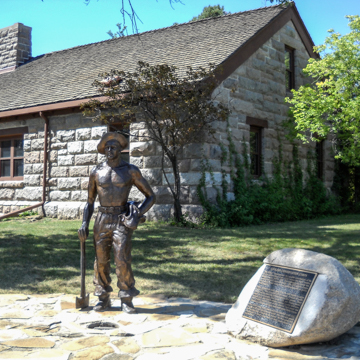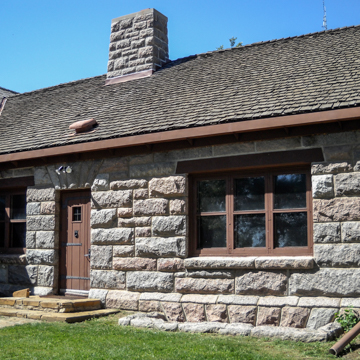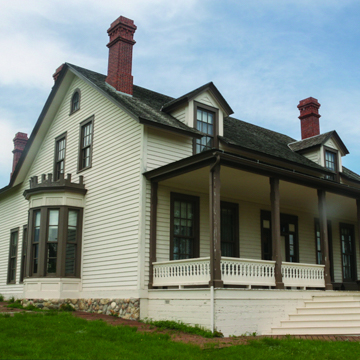In 1872 an infantry post named Fort McKeen was built on the bluffs overlooking the Missouri River and the former Mandan village of On-A-Slant. The next year the post became a cavalry post and was moved to the river-bottom flats where the historic site is located today. At that time it was renamed Fort Abraham Lincoln. Lieutenant Colonel George Armstrong Custer accepted command of the post in 1873. Using Arikara scouts and a cavalry force of about one thousand, he undertook a series of expeditionary campaigns to harass the Dakota, in contravention of the 1868 Fort Laramie Treaty. In recent years, a glib tourism ad campaign for this site announced, “Stay Where Custer Should Have.”
The Fort Lincoln historic site seems an odd superimposition of historic features from three eras. Reconstructions of Mandan traditional culture are interpreted at the On-A-Slant Village site. Barracks, stables, and officers’ quarters are the basis of interpreting the U.S. Army occupation of the site, along with a reconstruction of the Custer House and Commissary. Civilian Conservation Corps (CCC) associations with the site, dating from the 1930s, and CCC activity statewide are interpreted at the fieldstone museum and their work can be seen in several scattered picnic shelters and bridges.














